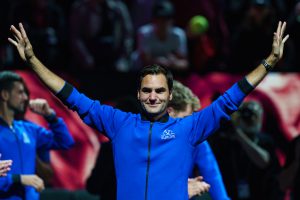The first thing you pick up on at David Menuisier's yard in Pulborough, West Sussex, is a feeling of calm or harmony. Veterans of training ground visits will recall stepping into authoritarian mini states, ruled by fear, or at the very least by hierarchy.
A lifetime in sport teaches you one thing above all: teamwork, which sounds abstract, but really isn't, is the most vital component in success. Collective effort is born not of motivational mantras stuck on walls but the way people actually treat each other. This isn't a discussion about culture wars or hyper-sensitivity in modern workplaces – more, a study of the unifying value of manners and consideration.
Togetherness is hard to build and easy to destroy. The other day an ex-footballer told me a story about a club he played for promising a bonus pot at the end of the season, but then not handing it over, even though the side had met its half of the bargain. The club pointed to a “discretionary” clause in the agreement and kept the money. The following season, the players enacted what we now call “quiet quitting.” Coincidentally – or maybe not – they were relegated.
Menuisier trains at the great West Sussex yard of Coombelands, in Pulborough, from where the immortal Dancing Brave set forth for Guy Harwood. A genial, thoughtful Frenchman who learned his trade from Criquette Head and John Dunlop, Menuisier is a modern leader. Harwood was a maestro who is still thriving, in the posh car market. In his era, many of the top trainers were officer class (Major Dick Hern, Captain Ryan Price et al) – patricians, who cared deeply about their employees, but will have had little time for emotional introspection.
The team dynamic in football, cricket and rugby is equally applicable to racing, where trainers, work riders, vets, farriers, admin staff and visiting jockeys come together in all weathers to form a single fighting force
At Coombelands last week (look out for the full TDN interview with Menuisier), we fell into a conversation you hear in all professional sports. Sir Alex Ferguson made players excel at Manchester United not by shouting but working them out as people, then calculating how he could get what he needed from them. He could shout too, when he felt the need, but psychological manipulation was his ace card. Ferguson saw human nature through X-ray eyes.
The team dynamic in football, cricket and rugby is equally applicable to racing, where trainers, work riders, vets, farriers, admin staff and visiting jockeys come together in all weathers to form a single fighting force.
John Dunlop, who trained along the road in Arundel, was patrician but also enlightened. And Menuisier carried something he learned from Dunlop to Harwood's picturesque HQ.
“The main thing I've tried to take from him [Dunlop] was the composure,” Menuisier says. “This man was exactly the same on a good day as a bad day. That's one thing I was always really jealous of when I worked for him because it's so hard to do.
“Call it wisdom, or whatever. I think you need to get a few knocks first to build yourself an extra skin.
“I think that's what I've done in my first 10 years as a trainer.
Criquette Head always told me 'it takes 10 years to make a trainer.' She's probably right. Only now can I find that place of wisdom where you do accept you'll have good days and bad days. It's very important for your sanity and everyone around you. If you lose it every time you have an issue it will have an impact on your family life, it will have an impact on your staff, and it will have an impact on your horses.”
A Flat racing yard in January when horses are only trotting in the icy air is unrecognisable from March, when serious work begins, or the build-up to Group 1 races, when the stable stars are hours away from their reckonings. Creative tension is healthy. Adrenaline is fuel. Accountability is essential. In a highly functioning team – in any sport – each must take responsibility for his or her actions, and for the consequences.
An elite Premier League manager confides that you can tell a side is fraying when players start “doing their own thing” on the pitch. They disengage. Self-interest seeps in. The self-interest curse in racing politics is a diversion best not taken here. For now we can just enjoy Menuisier laying out the case for civility and equanimity in a trade that sends some people mad with stress.
“I want peace,” he says. “I wasn't always like this. I said to my senior staff – if I don't scream my head off around the yard I don't expect you guys to do that. I want to be treating everybody with respect because we're one team here.
“If any member of the team doesn't work for that team, it can't work. Speaking to people on an even keel is a sign of respect, and you expect that from other people. And you can work together. If you scream at them you put yourself not as a bully but as somehow superior to them.
“I'm not saying everybody's equal. You can't be equal because you have to make the decisions, but it's so much easier to make decisions when you have a good atmosphere than a bad one.”
In an impolite, polarised, tribal age, these simple thoughts on how to treat people are a balm.
The post Team-Building at the Core of Menuisier’s Sussex Haven appeared first on TDN | Thoroughbred Daily News | Horse Racing News, Results and Video | Thoroughbred Breeding and Auctions.

